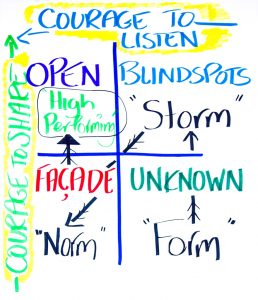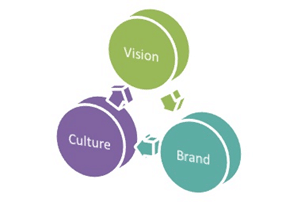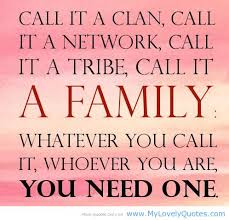Building high performance teams is not as simple as stating you want one and figuring out how you’ll measure it. It takes rigour, discipline and commitment. So how do you build a high performance team?

As stated in our previous blog on measuring if you have a high performance team it is important to mention again that high performing teams do not just ‘happen’ because people work together for long enough while consistently achieving targeted performance. It takes great rigour, discipline and commitment to be honest enough to develop and encourage each individual in the team to work and stay in the high performance space.
So, what do you need to know about building high performance teams that can bring it to a practical reality for you in your team and in your business? We summarise it into SIX critical and practical things you can action, within this blog:
- Recognise the different stages of team development
- Encourage the right level of openness within the team
- Transition through the stages of team development with speed and confidence
- Get the right people on board
- Engage in the right conversations within the team
- Inspire the right behaviours.
1. Stages of Team Development
Importantly, invest both the thinking and observation time to recognise the stage of team development your team is currently operating in. (Download our assessment tool here) Dr Bruce Tuckman published his model in 1965 (Tuckman’s stages of team development) and it still very eloquently and elegantly describes the stages a team progresses through. What many forget is that every time someone gets promoted, they leave, they join or the team structure changes then the team regresses to “forming” and it takes very different leadership and management tactics and conversations to shift them back up into high performance.
What indicates the stage of team development? Here are a few indicators to guide you:
FORMING – when people are trying to sort out what their role is and how they fit into the team. There is some inward anxiety and frustration and people resort to outward blame of others. People feel unsettled and yet don’t want to take personal responsibility and accountability..
STORMING – when there are disagreements about goals and outward confusion about who is doing what so people are actively “protecting” their space. It is like everyone is walking around with their elbows out to keep others away! There are low levels of trust within the team and cliques may become more evident.
NORMING – this is where the codes of behaviour are being established and performance is “good” – and it is not yet “great”, in the words of Jim Collins! Confusion is reduced and trust enhanced. I often say people walk around like “Madagascar Penguins” – too much smiling and waving and not saying what they really think and feel to the right person at the right time as they don’t want to upset the status quo! Another way of looking at it is that performance is mediocre because we are not unleashing the full potential of each team member, yet.
PERFORMING – your team are creating opportunities for innovation and continually seeking to improve the team and the individuals and very importantly they provide and receive incredibly honest and real feedback from each other. They also regularly initiate challenging conversations and are prepared to BE challenged.
2. Openness
Building high performance teams takes:
- Courage to share – what I am really thinking and feeling
- Courage to listen – when others are sharing what they are thinking and feeling.
It is really that simple and yet we consistently see the “Madagascar Penguins” smiling and waving when engaged in a conversation and after walking away from the conversation they resort to talking to others about what is irritating them…..and so begins the grapevine that works overtime in most teams and organisations. Bring openness and you shift into high performance where people say it as it is and engage in real conversations.
3. Transition
Building high performance teams means transitioning through the stages of team development with speed and confidence. This is where the team leader plays a pivotal role and we cover this in more detail in a later blog in this high performance teams series.
This transition feels counter-intuitive to many when we explain it – to shift people out of forming and into storming and then out of storming and into norming – there needs to be plenty of 1:1 conversations as this is what builds the trust and confidence within the team for everyone to be real with each other. Do away with team meetings and replace it with these 1:1 conversations and when you see the “norming” stage indicators starting to emerge then you are ready for everyone to engage in team meetings with real conversations!.
4. Right People
Building high performance teams begins with the people- their values and the behaviours they choose to bring when working with others. Sadly, many are recruited into teams because of their skills. Yet skills can be learned. In the HBR article “Great teams are about personalities, not just skills” it was refreshing to read their research:
“………individuals’ personalities play a significant role in determining team performance. In particular, personality affects:
- What role you have within the team
- How you interact with the rest of the team
- Whether your values (core beliefs) align with the team’s
Importantly, the above processes concern the psychological factors (rather than the technical skills) underlying both individual and team performance. These psychological factors are the main determinants of whether people work together well.”
In our Courageous Leadership Program we invest significant time exploring personality preferences, values and the thinking styles that drive behavioural choices so everyone starts to take responsibility for the impact they have on others. They also receive tangible evidence of just how different they really are from each other! We appreciate you sometimes inherit team members and don’t always recruit them and therefore it is even more important for people to know their personality preferences and take responsibility for how they are going to engage with others in order to bring out the best in others as well as their own best.
5. Right Conversations
Right conversations at the right time with the right people are critical to building high performance teams. We take a deeper look at this in the next blog when we look at the importance of “managing team performance”. Those managing and leading teams set the foundation for the conversations that happen or don’t happen in a team. “Real” conversations create the experiences which build high performance teams because they bring truthfulness, complete trust and openness with everyone in the team – no games, no politics, no hiding, no need for confidentiality and no false promises. Once you muster the courage to create this kind of personal accountability you create an empowering place to operate in for everyone in the team.
6. Right Behaviours
It all rests on the behaviours each individual person brings to the team. When building high performance teams it is critical to recognise you will only ever be as good as your lowest common denominator or in more blunt terms – your weakest link. We look later at creating a high performance culture which requires high performing teams and high performing teams require high performing individuals. Each individual brings the commitment and the discipline to bring the behaviours that align with high performance.
Engage in a real conversation with Mandy to explore any of these concepts in more depth so you know how to activate practical results!










